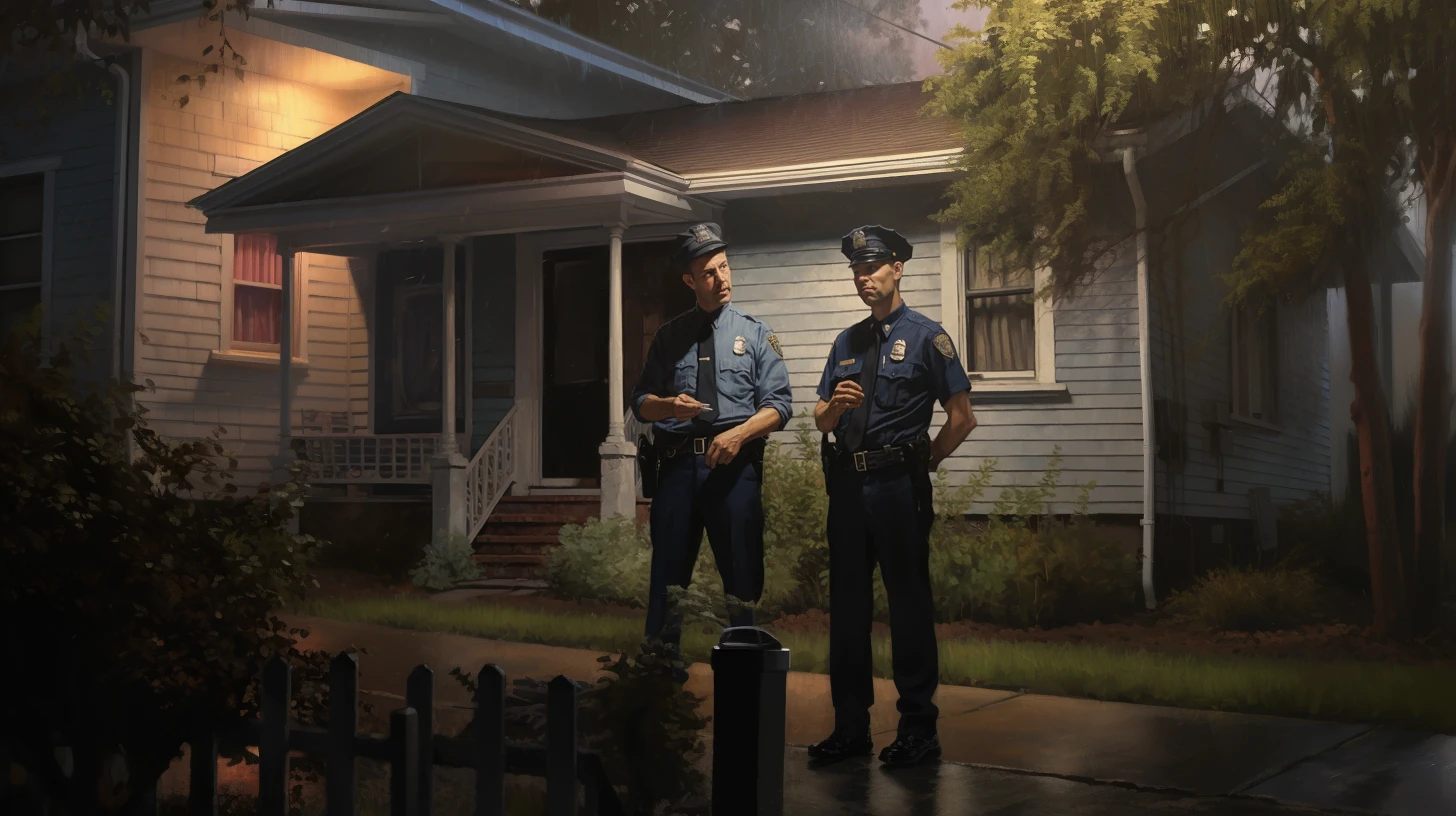
In our previous blog post of the “Understanding Search Warrants” series, Particularity in search warrants, we learned what makes a good description of a search location or evidence, and what doesn’t. Today, we apply what we have learned to writing residential search warrants.
A man’s home is their castle and the stakes are high when breaching a castles walls. A poorly written warrant can jeopardize an investigation and infringe on individuals’ rights. This post will provide practical tips on writing residential warrants. We’ll dive into the nitty-gritty details of how to construct an effective, legally sound search warrant for both residential and commercial properties. Whether you’re a seasoned detective or an aspiring law enforcement officer, this blog post is part of the masterclass in the art of writing search warrants.
KEY TERMS TO KNOW:
Curtilage: For legal purposes, curtilage refers to the area immediately surrounding a house or dwelling that is considered part of the home. Learn about curtilage and how it applies to searches.
Premises: A premises often refers to a piece of property along with the buildings and other structures on that property. The term can encompass homes, businesses, land, or any other type of real estate. In the context of a search warrant, the “premises” would be the specific location or locations that law enforcement has permission to search. This could include a house and its curtilage, a business establishment, or any other designated area.
A case from nearly a century ago, Steele v. United States (1925), established a foundational principle for writing search warrants: they must clearly describe the people, places, and items to be searched in such a way that the search team can identify the intended location with reasonable effort. The description of a residence or business within a search warrant is commonly known as the “legal description”. The warrant must include a description of the place to be searched to ensure there could be no confusion about which house is the authorized house. It is recommended to include the address, number of buildings from cross streets, the side of the road the building is on and which direction the front door faces.
Single-Family Residential Warrants
Usually, a house, apartment, condo, or motel room will have a unique street address that identifies it. While an address is useful, a physical descriptions of the walls, roof, windows and door should be included in the warrant. It is also recommended to add a description of a unique permanent feature.
The following are examples of good unique features:
- Three large rocks at the base of a mature tree in the front lawn.
- A permanent, free-standing, carport overs the driveway.
- The premises’ mailbox is located near the curb to the left of the driveway and is composed of bricks. The house numbers are painted on the door of the mailbox in black paint.
The following are examples of poor unique features:
- Residence is decorated with Christmas lights.
- A wooden bench is located to the left of the front door.
- The suspect’s vehicle is parked on the road in front of the residence.
Detached structures and temporary dwellings:
If you have probable cause to search detached structures on residential property, like a storage shed or a parked mobile home, the warrant must indicate which structures may be searched. You should include the physical characteristics of the structure; for example “The house located at 1234 Main St. in River City to include the white storage shed located in the northeast corner of the property.”
For a broader application, the affiant can use “premises” in the description of the place to be searched. For example, “The premises at 1234 Main St. in River City to include outbuildings and temporary dwellings”. The courts have interpreted the word “premises” as expanding the scope of the search to all outbuildings that are within the curtilage of the main house.
Multi-occupant residential warrants:
A multi-occupant residence is a building that has separate living spaces for different people. Think of a motel; the whole motel is a multi-occupant building, but each room is like a single-family home. When it comes to search warrants, the rules are clear. If officers only have reason to search one specific living space in a multi-occupant residence, the warrant should only allow them to search that space. For example, it might specify “apartment 108” or “hotel room 42 within the Knights Inn on 1234 Main St. in River City.” The warrant has to clearly state which part of the building can be searched, or who lives in the area that will be searched, ie. “the room belonging to Jack Tripper”.
But just because occupants have their own bedrooms doesn’t mean a single-family home is a multi-occupant residence. In People v. Gorg (1958), police initially suspected a resident of selling marijuana from a three-bedroom apartment he shared with Gorg and another roommate. They got a warrant to search the whole apartment and found marijuana in Gorg’s bedroom. The court denied the motion to suppress because the warrant allowed the search of the entire apartment, not just specific rooms. It is important to note that the bedroom doors did not have locks, which may have changed the courts opinion.
BUSINESSES
If a business takes up an entire building, and there’s enough evidence to search the whole business, the warrant can just state the building’s address and allow officers to search the whole place. It is recommended to include the name of the business as well. However, just like with houses where multiple people live, if there’s only evidence to search a specific area or room, the warrant needs to clearly state which part can be searched. Some businesses share a common address, like a strip mall, and are defined by suite numbers; situations like these should have descriptions with better details.
Detached commercial structures:
If you have enough evidence to search buildings related to the main business office, you should should describe each building that you also need to search. This is because the connection between different buildings on a business property can often be unclear.
USING PHOTOS
A picture is worth a thousand words, and photos can play a critical role when drafting a search warrant for a house. They offer a clear and unambiguous reference that can help law enforcement officers accurately identify the place they need to search.
This is especially helpful in situations where addresses or building numbers might be unclear or missing. Including a photo can reduce the risk of officers inadvertently searching the wrong place, which could infringe on someone’s privacy rights and potentially invalidate any evidence found. Moreover, it provides a visual record that can be useful if the warrant’s validity is later questioned in court.

Want to learn more about search warrants? Follow our blog series to learn more about how search warrants work, tips & tricks for writing great warrants, and insights on evidence that law enforcement can collect. There is a lot to learn, so rely on the experts at WarrantBuilder.com! Sign up for a free trial and learn why cops across the country trust Warrant Builder for fast, efficient, and complete search warrants.
